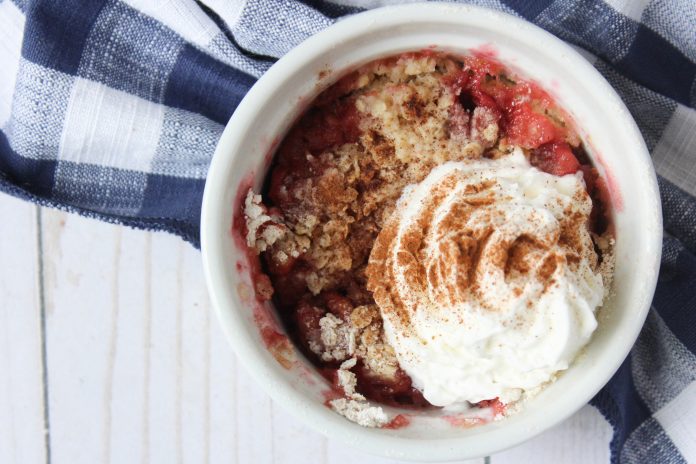By United Supermarkets Dietitian Team
United Supermarkets’ Lifestyle Desk
May is Celiac Disease Awareness Month. Doctors estimate that nearly 3 million Americans deal with Celiac Disease with the majority of those individuals going undiagnosed. While many people have heard the term “gluten-free,” there can be a lot of confusion around what all this disease entails and how it impacts people’s diets.
What is Gluten?
Gluten is a protein found in wheat, rye, barley, and sometimes oats. Common foods that contain gluten include breads, crackers, baked goods, cereals, croutons, flour tortillas, pastas, and noodles. Gluten can often be hidden in items that you would typically not think to check such as soy sauce, salad dressings, granola bars, French fries, potato chips, and even processed lunch meats.
The safest and easiest way to navigate grocery stores is to read ingredient lists and look for the “GF” seal on food packaging and or using our in-store and online lifestyle tags! The “GF” seal indicates that a food is safe to consume for those avoiding gluten. In order to receive this seal, companies must provide evidence of gluten-free manufacturing practices so cross-contamination can be avoided for those with severe allergies.
Reasons for Gluten-Free Living
Celiac Disease
What is Celiac Disease? Celiac Disease is an autoimmune disease that causes the body to react to gluten, a protein found most commonly in wheat. When an individual with Celiac Disease ingests gluten-containing foods, the immune system goes haywire and essentially attacks the lining of the small intestine. Damage to the small intestine can result in decreased nutrient absorption and vitamin deficiency if left to continue.
Symptoms of Celiac Disease include iron-deficiency anemia, fatigue, joint pain, migraines, osteoporosis, and digestive issues. Individuals with Celiac Disease must avoid all gluten-containing foods so that they may be free of symptoms. Cross-contamination of gluten-containing foods is a large issue for those with Celiac Disease. Cross-contamination occurs when a supposedly gluten-free food comes into contact with a surface that previously had gluten-containing food on it (i.e. cutting boards, dishwashing supplies, etc.).
Because there is immune system involvement with Celiac Disease, any trace particles of gluten can contaminate a food, and cause a reaction to an individual with this disease.
Non-Celiac Gluten Sensitivity (NCGS)
Non-Celiac Gluten Sensitivity is a term for individuals who experience strong reactions to gluten-containing foods, but there is little-to-no immune system involvement. There is still more research needed on Non-Celiac Gluten Sensitivity, but it appears that individuals will present with an intolerance to gluten, specifically with digestive disturbances. An individual knows their body better than any health professional, and it is important for these individuals to advocate for themselves by ensuring their diet is meeding their needs.
Is Gluten-Free Really Better for Me?
This can be a complicated and overwhelming question for some individuals. Diets must be tailored to the individual. Not one diet will be best for everyone. For individuals with Celiac Disease or NCGS, it is critical to remove gluten from the diet. For individuals who thrive on lower carbohydrate and higher fat diets, this may be considered an alternative path. For the majority of Americans, without the appropriate medical need, a gluten-free diet is not one that is always healthier.
Typically, individuals trying a gluten-free diet will stock up on items found in the gluten-free aisles of stores that replicate their beloved bread products. Many of these processed gluten-free items found in the cracker or cookie aisle will often have other additives and fillers necessary to replace the gluten. These products can be higher calorie, higher fat, and may contribute to unnecessary weight gain.
Many individuals believe that gluten-free diets will result in weight loss because it strictly eliminates higher sugar, higher calorie, and higher carbohydrate foods. The elimination of these foods can be an option if you are typically consuming white refined carbohydrates, but a balanced diet can include these foods if consumed in moderation if there is no medical need for restriction.
Gluten-Free Living
Whatever the reason is for avoiding gluten, it can seem overwhelming. What does a gluten-free plate look like you might be thinking? It should contain fruits, vegetables, lean proteins, healthy fats, legumes, and gluten-free grains. Some gluten-free grains include brown rice, quinoa, and amaranth. There is no reason to eliminate all grains when pursuing a gluten-free diet. Our bodies prefer glucose, derived from carbohydrate consumption, as our main source of fuel for the brain and body! If we deprive the body of these necessary carbohydrates, our health may be jeopardized. In order to live a healthy gluten-free life, just read labels and find alternative grain sources in your meal!
Gluten Free Cherry Cobbler
Ingredients
1/2 c. canned cherries drained
1 tsp. Swerve Granulated sugar
1 Tbsp. cassava flour
1 1/2 Tbsp. Rolled Oats
1/2 tsp. Swerve Granulated sugar
1 Tbsp. cold butter, diced
Directions
1. Mix together the cherries and flour to coat evenly and place in a small microwave safe bowl
2. In a separate bowl, combine oats, sugar and butter. Mix quickly so as to not melt the butter.
3. Pour on top of cherries and microwave for 1 minute




